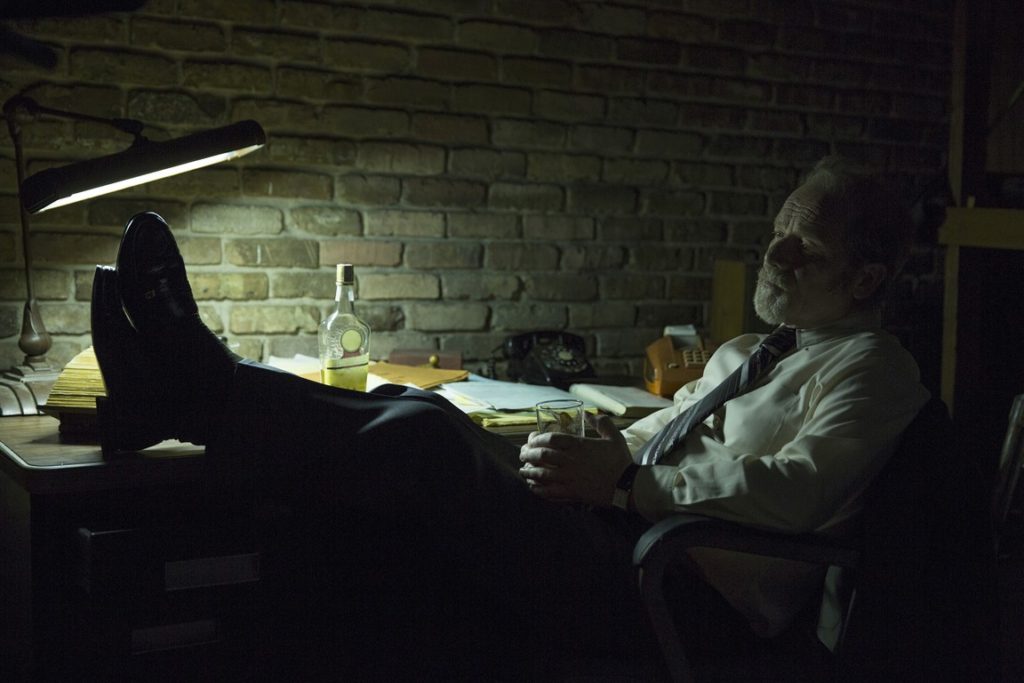ASC Award-nominated Director of Photography Pepe Avila del Pino’s dynamic cinematography has skyrocketed him to the forefront of cinematography across all genres and platforms including film, television and commercial. Most recently, Del Pino shot the Maven Pictures’ Sundance Festival’s Grand Jury Prize-nominated film, The Kindergarten Teacher, starring Oscar-nominated Maggie Gyllenhaal – which screened at TIFF this year, and is set to premiere on Netflix October 12.
Avila del Pino’s genre-defying work brought to fruition the story of the intense bond a New York kindergarten teacher creates with her student, whom she believes is a child prodigy.
During our conversation, del Pino described the film not only as a “psychological thriller… It is a bit of a love story [between the teacher and the kid… and it is also a drama]. As the film progresses, it shifts towards more of a voyeuristic feel. This was the main challenge of the film.” In essence, del Pino’s approach when preparing for this film was to talk with writer-director Sara Colangelo. Their conversations allowed him to “navigate all the tones and give [the film] a cohesive structure.”
Avila del Pino’s level of meticulousness covered all level of the production. The period during pre-production lasted about two months prior to filming starting. He made sure to spend at least four hours daily going through all the preparations. When he finished, the visual vocabulary of the film had changed from beginning to end. This meant he and team went back to the beginning to ensure the team knew the look and feel of the film.
Colangelo and Avila del Pino planned all of the scenes during pre-production – she controlled everything for the film. As such, they mapped the whole film first. Then he and his team, shot everything twice. He described his work sort of like a painting with some tones of levity or lightheartedness. While at the same time, knowing “how many slow creepy zooms we needed… [knowing] when we got too close, and when to pull back.”
Prior to his excellent work for The Kindergarten Teacher, Avila del Pino’s extensive work as a Director of Photography was already well known. His work includes, the first two episodes of Netflix’s series, Ozark, starring Jason Bateman, an episode of Amazon’s original series, Philip K. Dick’s Electric Dreams, The Deuce” starring James Franco, for which his cinematography was nominated for a 2017 ASC award.
With such extensive and sought after work, I asked Avila del Pino about major influences in his work. He was quick to state there are “no general influences for my work. I approach every project differently… Most of my storytelling [skills] come from literature. I think subconsciously, I started my artistic approach by painting when I was young. That’s how I approach lighting…” He described how he uses light and shadow techniques he has seen and used in paintings when planning for any given shoot.
Interestingly Avila del Pino mentioned how he sort of stumbled into cinematography. He began directing at NYU; he shot a few short films. Yet he realized he loves “the very creative process [in cinematography]. I see myself as a storyteller [through cinematography]. I come up with a vocabulary that complements the story that you’re trying to do.”

We went on to discuss his general approach. Essentially it varies from project to project, and director to director. “Some directors don’t like to pre-shoot the film; it is a more improvisational way. Every project varies, but we always talk about themes, [or main] idea… what the world is so when we get directions on the fly, they will work within the boundaries we already established.”
His work for film versus TV series sometimes depends on a few things. Thus far, Avila del Pino has primarily done pilots, at least the first 2 episodes of a show, and a whole series with same director. In these instances, working with one single director is similar to films. When filming the first episode of a series, “it is sort of lucky because I set the tone. When working on the Cinemax/HBO mini-series Quarry, we shot all 8 episodes together. That was 85 very hard shooting days… all continuous. You have to have a clear idea of where in the story you are. We were filming episode 7 scenes while also shooting other episodes. We would jump back & forth. It becomes a bit complicated, and everyone has to be on the same page.”

It was during his work on Quarry that Avila del Pino encountered one of his hardest shoots. Each episode had a 7-minute continuous shot. The last episode had a 13-minute take that involved a battle in Vietnam — “there had to be an explosion, fire, shots, people on fire”. This take was filmed over 3 days — first day was rehearsal; second day it was rehearsal and film; third day most of the filming took place. “We had to make sure we were shooting in right time of day, but we couldn’t delay the whole production just for [the timing]”. They were filming in the Louisiana heat, by the way. It was long but it “turned out great”.
One of the most interesting parts of my conversation with Avila del Pino was how he described himself now versus 10 years ago. Boastful he is not. He did confess the “most basic [change] is technically. I am more confident in decisions I’m making”. However, he quickly pointed out how at the beginning everything was about “curiosity with a lot of experimentation.” What he aims for is to “keep the curiosity & trying to keep myself vulnerable. I still want to make mistakes, and don’t always be afraid of fucking it up”. My goal is the “more invisible my work, the better”… His vision is that the more involved we are in the story, emotionally, that’s all that matters.

Avila del Pino is next set to create the visual style for the first two episodes of the upcoming Netflix series, Chambers, starring Uma Thurman.






